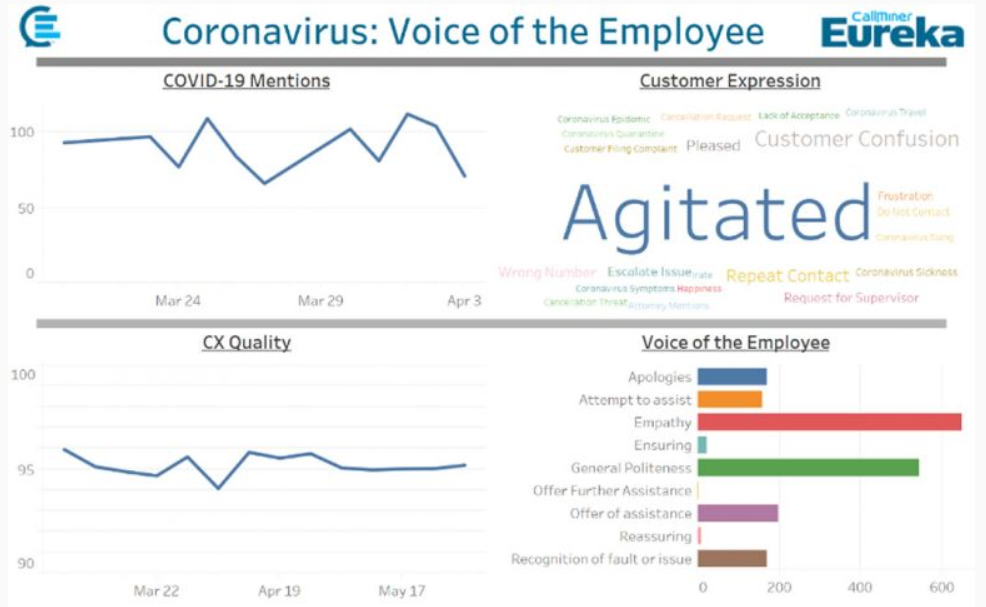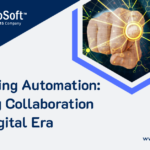

Use APIs to Enhance the full value of Interaction Analytics to your Business
Data from interaction analytics can have far-reaching impacts throughout an enterprise, not just within the contact center. It is imperative for companies to extend actionable insights from their contact center to all business units within the organization.
The best way to do this is by using the set of APIs that CallMiner provides as a key part of its software package. These Application Programming Interfaces (APIs) are powerful and efficient interfaces that your organization can use to extract and drive data to a multitude of 3rd party and homegrown applications throughout the company including CRM; ERP; CSP; marketing platforms, data reporting dashboards, customer databases, compliance management systems and many other systems and databases.
We will present a three-part series on the CallMiner’s APIs to show their basic value to do precisely that function of distributing interaction analytics data to other corporate systems, and to illustrate how they can be used for this purpose. Over the 3-part series, we will show relevant use cases of these potent application programming interfaces in action.
This paper is the start of this exciting series. We will introduce the definition of API and give an overview of the two types of APIs CallMiner provides, namely the data API and the ingestion API. Lastly, we will show you the value of the CallMiner APIs in supporting your organization and how to get the most of CallMiner’s customer interaction analytical platform.
Our second paper will take a dive deep into CalllMiner’s ingestion APIs and the focus for the last paper will be on the set of data APIs. It is via the data APIs that an organization can distribute the key information derived from interaction analytics to all other parts of the company.
Background
The CallMiner Eureka platform is the leading, best-in-class platform for performing automated interaction analytics within a company’s contact center. The Eureka cloud platform is at the core of a myriad of use cases and applications within the contact center that enhance agent effectiveness, improve customer satisfaction, and automate and streamline the quality assurance measurement process within contact center operations. There are many other such use cases and applications within the contact center where CallMiner is the key to success.
But what about all the other business units within a corporation that can benefit from the information derived via CallMiner’s interaction analytics? The way to provide that information to other business units is via the set of data APIs provided by CallMiner, and that is the topic of this paper. The beautiful thing with the CallMiner platform is the fact that all (100%) of data available to users via the Eureka interface anywhere in the system are also available to extract via the set of data APIs.
Of course, to utilize this set of APIs efficiently and smartly will require experienced developers with considerable knowledge and experience in API structure and development, and at the same time the developers must also have experience with the specific methods and structure of the Call Miner set of data APIs.
While the CallMiner APIs are well written and straightforward to use, there is of course a significant learning curve that needs to be accomplished to build and implement robust designs for distribution of the data using these APIs. Companies that are now using CallMiner, or plan to use it in the near future, can certainly dedicate and train IT resources to become experts at the CallMiner APIs, and in the long run that is in our opinion the right move.
There is every expectation that CallMiner will continue to expand and enhance the Eureka API library, and essentially everything you can do with the system itself can be done in a customized fashion using this API library. So there is a compelling reason and need for companies to gain this expertise.
As a dedicated technology partner of CallMiner, Macrosoft has a dedicated staff of developers experienced in CallMiner’s APIs. We are ready to assist companies in two ways: (1) build custom applications using the APIs to distribute the interaction analytics data to other systems and databases within the company’s business units, and (2) provide dedicated (even one-on-one) training of company developers to get them up to speed as quickly as possible on building additional custom applications using these APIs, and on using best practices in developing and implementing new custom applications.
It is clear to us that this is the way forward for fully utilizing the value of the CallMiner system, and this will become ever more apparent as new releases of the CallMiner system are unfolded in 2021.
What is Application Programming Interface?
An application programming interface, short of API, is a computing interface that defines interactions between multiple software intermediaries. It defines the kinds of calls or requests that can be made, how to make them, the data formats that should be used, the conventions to follow, etc. In short, consider an API the bridge between two systems. APIs connect the two systems so information exchanges will be efficient and organized.
Enterprise-level API Framework with no additional charge


Figure 1: CallMiner API Framework
Figure 1 above shows the CallMiner API Framework, which is made up of Ingestion APIs and Data APIs. CallMiner offers the client this framework that covers the entire journey of their data stream. From the very start, such as your call recording vendor or your local database that stores customer survey data, the Ingestion APIs help you upload all this data to Eureka. Then the Eureka Platform does its magic to find the hidden values in the conversations and displays that data and information to you via the Eureka UI. The Data APIs give you the choice to export all these values to any other system or database you specify.
The best part of the story is, all these Call Miner APIs are available at no additional cost! The API framework is available for any client who chooses to engage with CallMiner. And if you engage us to assist you to implement Call Miner in your contact center, we can also at the same time provide additional resources to build custom applications using these APIs or in training your developers in getting up to speed quickly on the Call Miner API framework.
Ingestion APIs
A great deal of information related to your customer interactions is locked away in business apps across your organization. The Eureka Ingestion APIs can help you take full advantage of that contextual data by asynchronously adding this data ― such as dispositions, sales stats, or post-contact work ― to other important contact metadata into Eureka resulting in enhanced interaction analysis and intelligence.
The most exciting part of the ingestion APIs is that not only can they be used to upload call recordings, they are also capable of uploading 100% of your other customer interactions such as texts, chats, emails, surveys and social media. Ingestion APIs let you take the driver’s seat and decide which information sources you want to load into the platform and when. You might start only with the call data, but soon enough you may be ready to ingest many of the other omnichannel data sources as well.
So learning and knowing how to use the Ingestions APIs yourselves will allow your company to expand and enhance the customer knowledge base by ever-increasing the omnichannel sources of data brought into the Eureka intelligence platform.
Data APIs
Eureka generates valuable analytics data and intelligence about your customer interactions. You can use the Eureka set of Data APIs to share these important business insights across your organization through direct integration with your API-enabled internal business systems such as ERP, CRM, data warehouse, BI tools, 3rd party applications such as Salesforces and Data visualization tools
Stay tuned for the second and third parts of this series, where we will take you with us on a detailed tour of both Ingestion APIs and Data APIs.
How can CallMiner API support your business
Insight from every call becomes more powerful when combined with your existing customer data available in other business systems and databases. Additionally, the ability to customize insight of your customer’s intent, action and sentiment within corporate file formats and data warehouses makes it easy to create awareness and encourage innovation.
CallMiner’s Eureka APIs enable standards-based integration with a wide range of your systems. Combine structured interaction detail and metadata to trigger alerts, enhance scoring with your data, and create applications and reports with rich contextual intelligence.


Figure 2: Tableau dashboards powered by CallMiner’s data API
Figure 2 shows a typical use case of CallMiner’s data APIs. In this example, the insight, categorization and scoring in the Eureka system are transferred to a visualization tool, which in this case is Tableau.
APIs give your organization the ability to transfer all values of your customer interaction analytical platform to any 3rd party of your choice in an organized and automatic fashion, whether it’s Tableau, your CRM system, or a backup database. CallMiner APIs establish a connection between your organization’s corporate systems and all the business values created in the Call Miner system. What you can do with this data and intelligence using these APIs is endless!
Macrosoft’s API Experts
At Macrosoft, we have a team of expert software engineers who have years of experience using APIs and are also experts at the CallMiner set of Ingestion and Data APIs. Choose to engage with us, and our API team will help you step by step along the way to automate your journey. The journey can either be to pass your interaction data to other downstream corporate systems, or conversely to input additional customer data to the Eureka platform to enhance the customer intelligence and insights the Eureka platform creates. From data uploading to insight exporting, our experts will help you achieve it most effectively in a robust and secure custom application.
By Allen Shapiro, Ronald Mueller | December 15th, 2020 | CallMiner
Recent Blogs


Humanizing Automation: Fostering Collaboration in the Digital Era
Read Blog

Advantages of Technology and IT Companies Partnering with Staffing Firms Offering Visa Sponsorship
Read Blog

CCM in the Cloud: The Advantages of Cloud-Based Customer Communication Management
Read Blog


 Home
Home Services
Services





































